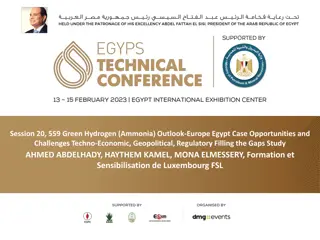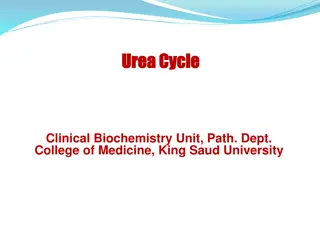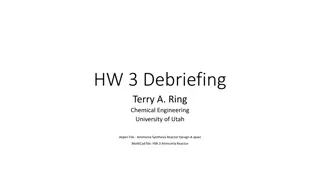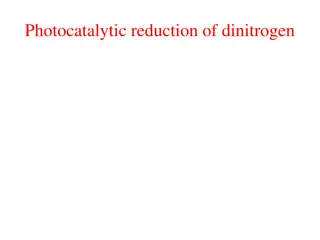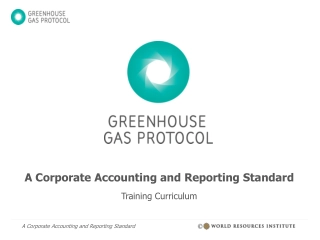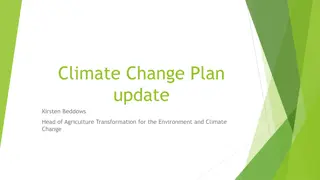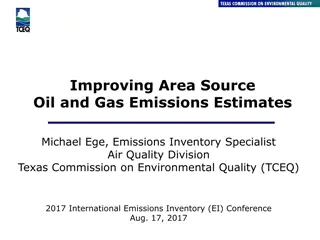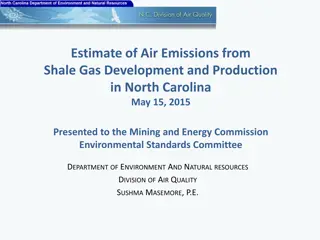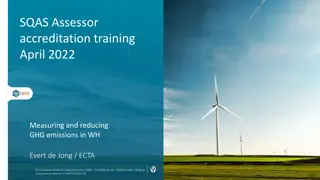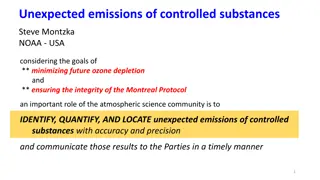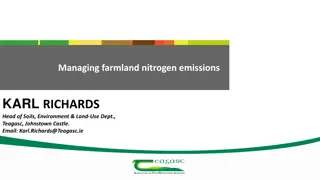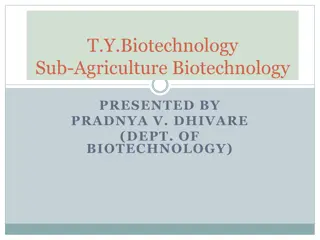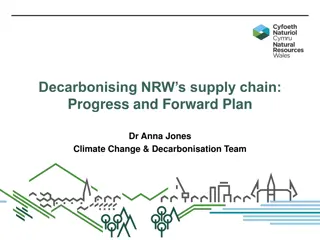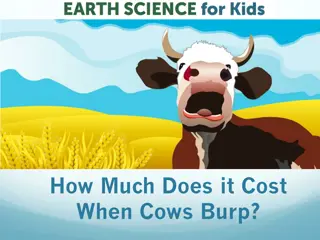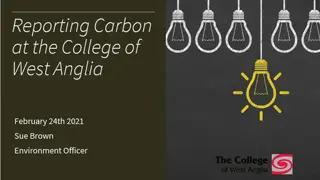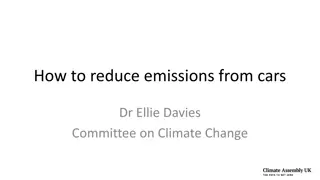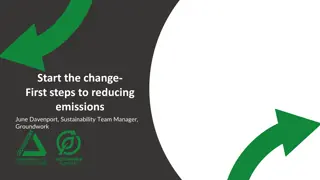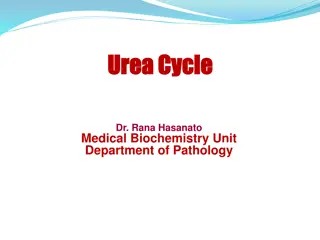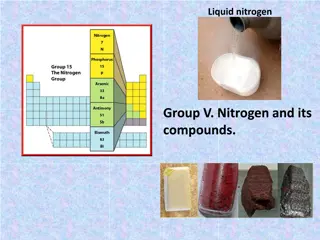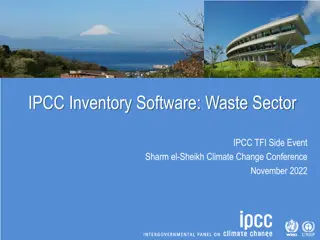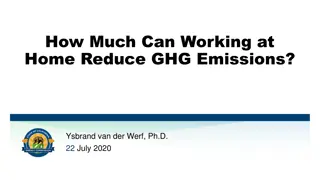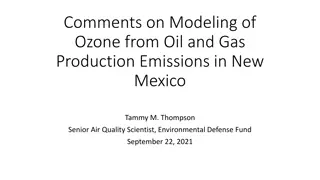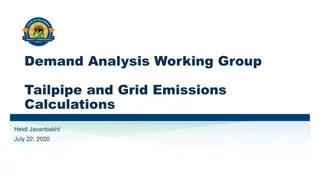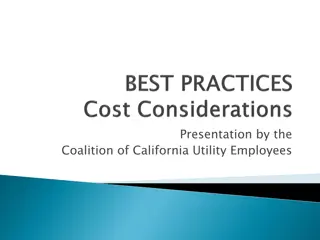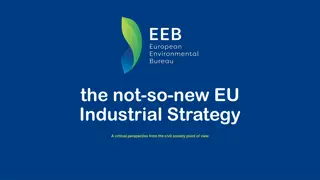Cost-effective Measures to Reduce Ammonia Emissions in Agriculture
Cost-effective strategies to reduce ammonia emissions in agriculture are crucial in Latvia, where a significant portion of emissions originate from the agricultural sector. The study focuses on potential measures, such as precise mineral fertilizer application, improved manure management, nitrogen fixation techniques, and promoting organic farming practices. By implementing these selected measures, there is a potential for substantial reduction in ammonia emissions, contributing to a cleaner environment and meeting European emission targets.
Download Presentation

Please find below an Image/Link to download the presentation.
The content on the website is provided AS IS for your information and personal use only. It may not be sold, licensed, or shared on other websites without obtaining consent from the author. Download presentation by click this link. If you encounter any issues during the download, it is possible that the publisher has removed the file from their server.
E N D
Presentation Transcript
27.02.2020. Cost-effective ammonia emissions reducing measures in agriculture Assoc. prof., Dr.oec. Dina Popluga Assoc. prof., Dr.agr. Dzidra Krei mane
Topicality Ammonia emmisions in Latvia, 2016 Total 16.25 kt 18 Agriculture 13.97 kt 16 86% of ammonia emissions come from agriculture, therefore measures for ammonia emissions reducing must be targeted to the agricultural sector. 14 12 10 kt 8 86% 6 4 2 0 Mineral fertilizer application 49% 51% Manure management
Topicality Ammonia emissions projections with current policy Directive 2008/50/EC of the European Parliament and of the Council of 21 May 2008 on ambient air quality and cleaner air for Europe sets emission targets for EU Member States for ammonia emissions. The following emission projections exceed the national targets for the reduction of ammonia emissions.
Potential ammonia emission reducing measures in Latvia
Selected and analysed ammonia emission reducing measures in Latvia Aim Measure Precision mineral fertilizer application Fertilization planning and practical implementation Direct application of liquid manure into soil Option 1 piplines Option 2 injector Option 3 band spreader Reduced time for poultry manure incorporation into soil (4 h) Effective nitrogen fertiliser application Reduced time for slurry incorporation into soil (4 h) Reduced time for litter manure incorporation into soil (12 h) Nitrogen fixation by introducing leguminous plant into crop rotation Covering of liquid manure storage Option 1 expanded clay Option 2 film Option 3 tent Option 4 concrete Construction of new cylindrical manure storage facilities Promotion of biogas production Promotion of organic dairy farming Effective manure management outside animal housing Development of organic farming
Assessment of costs-effectiveness and ammonia emission reduction potential of selected measures
Ranking of measures according to ammonia emission reduction potential (potential calculated for 2021-2030), kt NH3 Measures with high reduction potential (77% of the total reduction potential) Measures with medium reduction potential (total 18% of total reduction potential) Measures with low reduction potential (total 5% of total reduction potential)
Ranking of measures according to the cost of reducing ammonia emissions, EUR kg-1NH3 Cheap measures Moderately expensive measures Very expensive measures
Marginal Abatement Cost Curve (MACC) for ammonia emissions reducing measures Cost effective measures with high NH3 emissions reduction potential. These measures are considered to be the most effective both economically and environmentally and should be prioritized for more active implementation in practice.
Marginal Abatement Cost Curve (MACC) for ammonia emissions reducing measures Cost effective measures but with low NH3 emissions reduction potential. These measures are considered effective, but with little effect on reducing NH3 emissions. In order to maximize the impact, the scope for increasing the number of target farms, animals, the target area should be reviewed.
Marginal Abatement Cost Curve (MACC) for ammonia emissions reducing measures Measures that are cost-inefficient but with high NH3 reduction potential. These measures are considered to be economically inefficient but very effective from the environmental point of view as they have a significant impact on reducing NH3 emissions. Therefore, financial support to farms is needed to facilitate the practical implementation of these measures.
Conclusions Latvian farmers as a whole are ready to move more actively towards climate and environmentally friendly agriculture by introducing various measures on their farms. However, there are currently many technological, environmental, economic and social constraints that hinder the practical implementation of measures on farms. Detailed evaluation of ammonia emission reduction measures - cost-effectiveness calculations, calculations of emission reduction potential, allow the evaluated measures to be grouped according to their priority: Cost effective measures with high NH3 emissions reduction potential; Cost effective measures but with low NH3 emissions reduction potential; Measures that are cost-inefficient but with high NH3 reduction potential.


